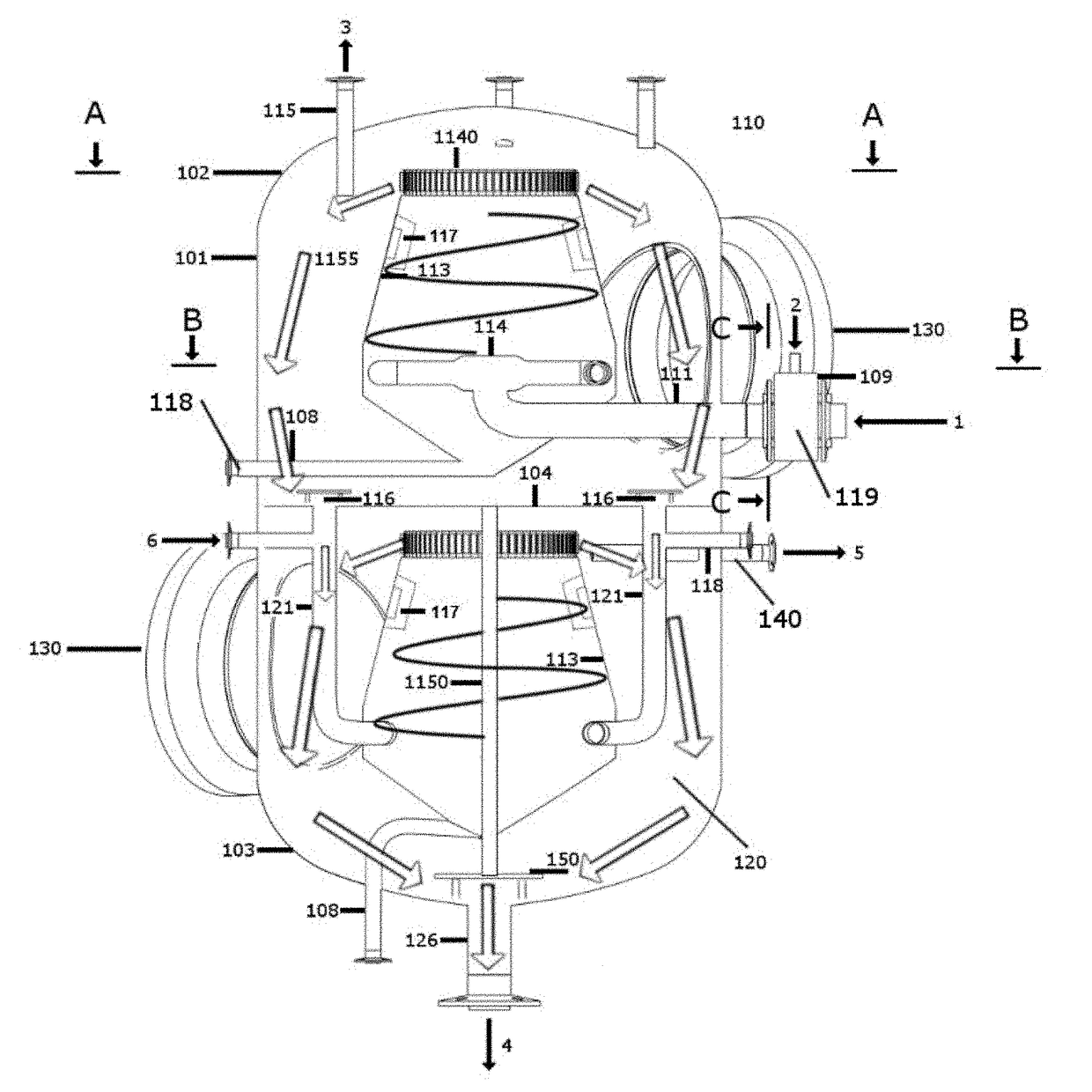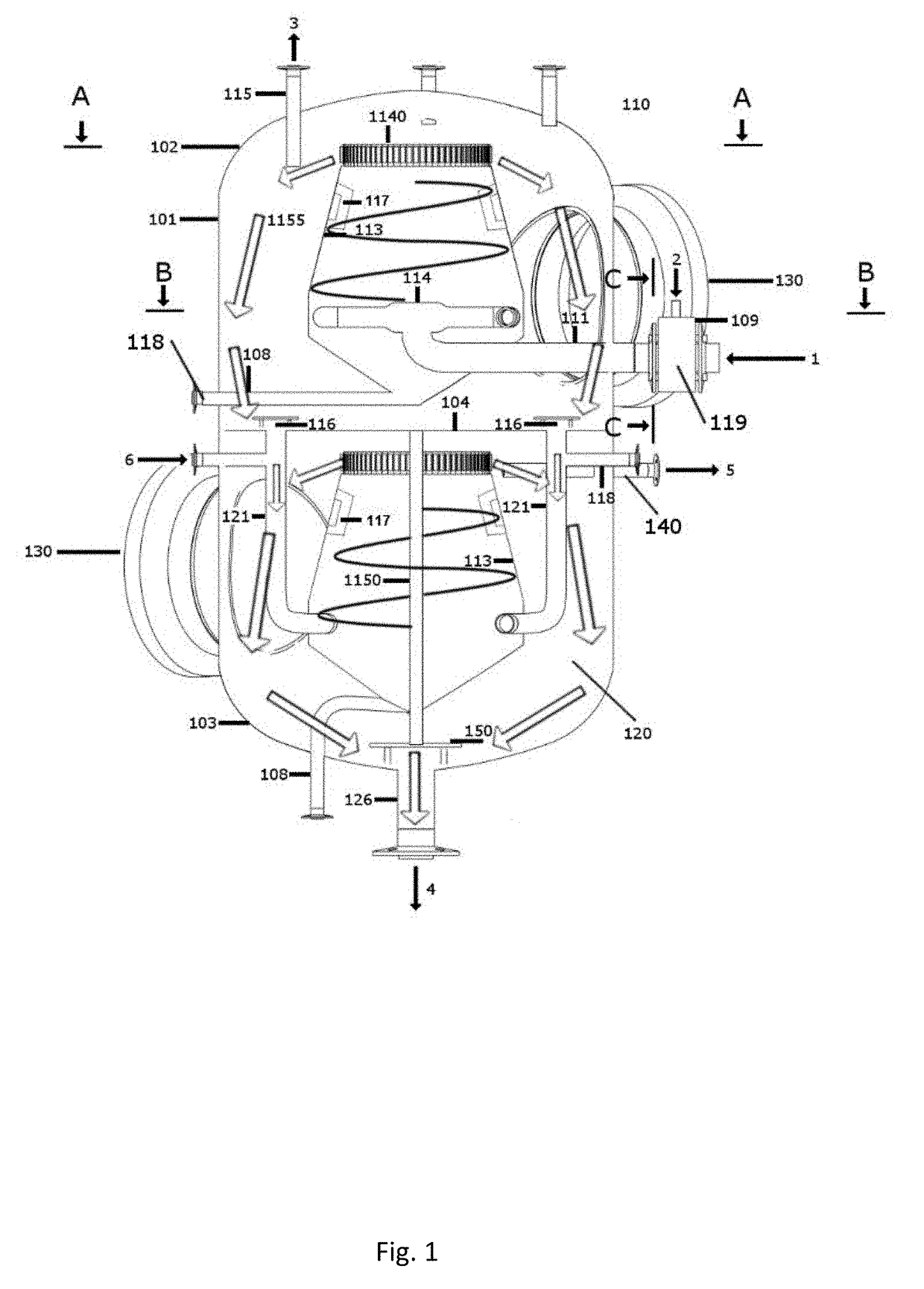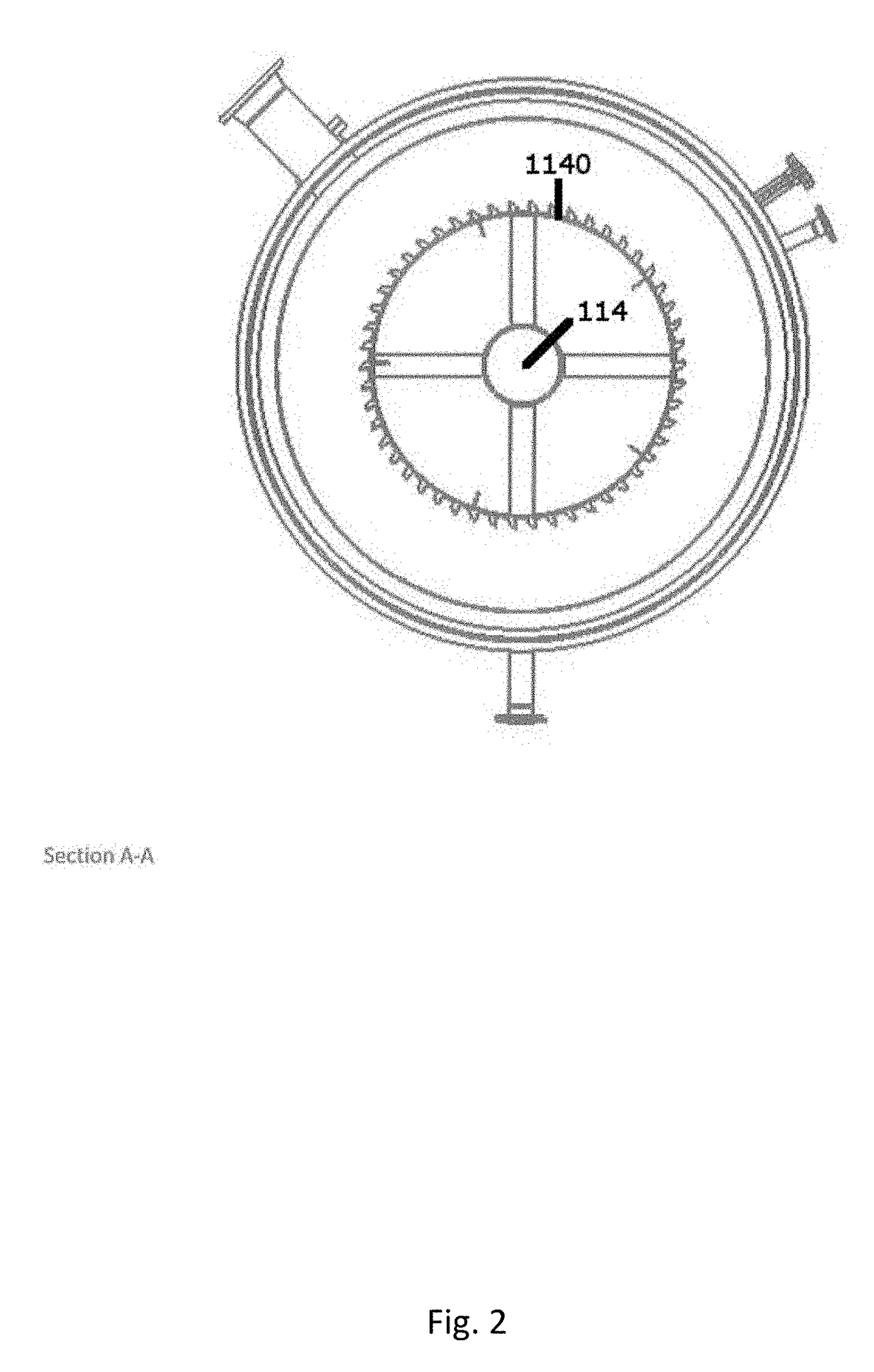Hydrocarbon-water separator
a technology of hydrocarbon separator and separator tank, which is applied in the direction of separation process, separation process, and treatment water, etc., can solve the problems of limited space available for separator tanks aboard ships or offshore platforms, large input fluid rate, and high cost, so as to reduce manufacturing costs and improve flow conditions
- Summary
- Abstract
- Description
- Claims
- Application Information
AI Technical Summary
Benefits of technology
Problems solved by technology
Method used
Image
Examples
Embodiment Construction
[0034]FIG. 1 illustrates an apparatus 100 according to the invention. The apparatus 100 comprises a cylindrical tank wall 101 closed by a top cap 102 and a bottom cap 103. An input flow of initial fluid 1 contains a mixture of water, hydrocarbons and a process gas 2, i.e. N2 or CO2. The process gas is thoroughly mixed with hydrocarbons and water in a mixer 109, and fed into a cone shaped bowl through a pipe which is split into two or more pipes, i.e. pipe spread, with pipe ends protruding tangentially to the inner conical wall forcing the fluid into an upward rotating laminar flow in a clockwise direction when viewed from above. This is advantageous on the northern hemisphere due to the Coriolis force and hence the natural direction of a vortex north of equator. Accordingly the pipe assembly designed for the southern hemisphere would preferably guide the input fluid in the opposite direction, i.e. counter-clockwise when viewed from above.
[0035]The upper part of the bowl comprises a ...
PUM
| Property | Measurement | Unit |
|---|---|---|
| pressure | aaaaa | aaaaa |
| internal pressure | aaaaa | aaaaa |
| pressure | aaaaa | aaaaa |
Abstract
Description
Claims
Application Information
 Login to View More
Login to View More - R&D
- Intellectual Property
- Life Sciences
- Materials
- Tech Scout
- Unparalleled Data Quality
- Higher Quality Content
- 60% Fewer Hallucinations
Browse by: Latest US Patents, China's latest patents, Technical Efficacy Thesaurus, Application Domain, Technology Topic, Popular Technical Reports.
© 2025 PatSnap. All rights reserved.Legal|Privacy policy|Modern Slavery Act Transparency Statement|Sitemap|About US| Contact US: help@patsnap.com



